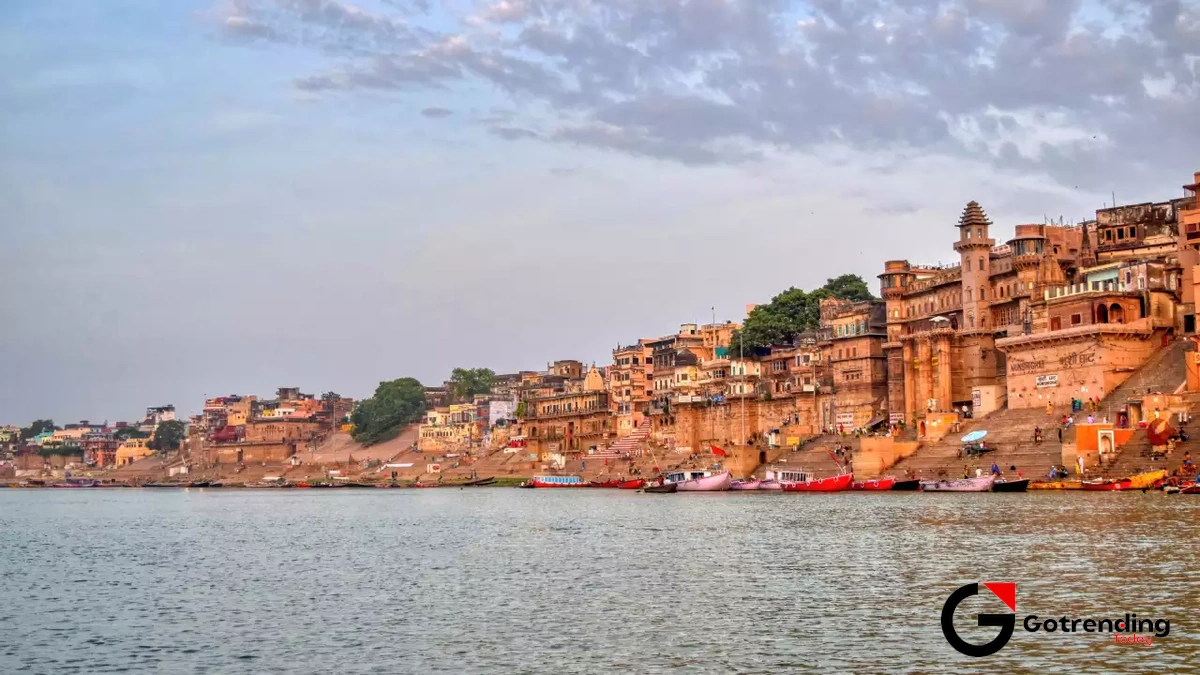Why Prayagraj Matters Now More Than Ever (It’s Not Just a Name Change)
Let’s grab a virtual coffee and talk about a city. Not just any city, but one that’s a living, breathing paradox. A city that holds the key to understanding India’s past, its turbulent present, and its ambitious future. I’m talking about Prayagraj .
Now, I know what you might be thinking. “Oh, you mean Allahabad? The city they renamed?”
And yes, you’re right. But here’s the thing, and this is crucial: focusing only on the 2018 name change is like reading the last page of a novel and thinking you know the whole story. The shift from Allahabad back to Prayagraj wasn’t just a political headline. It was a tremor, a signal that something deep within the tectonic plates of Indian identity was shifting. It was a reclamation, a statement, and a signpost pointing towards a new kind of future, built on a very, very old foundation.
To truly get Prayagraj, you have to look beyond the news cycles. You have to understand it as a city of confluence and I don’t just mean the rivers.
Beyond the Sangam | Decoding the Spiritual DNA of a City

You can’t talk about Prayagraj without talking about the Triveni Sangam . It’s the city’s heart, soul, and its eternal claim to fame. This is the spot where three of India’s most sacred rivers the Ganga, the Yamuna, and the mythical Saraswati are said to merge.
But let’s be honest, the pictures don’t do it justice. The slightly greenish Yamuna meets the muddier Ganga, creating a distinct line in the water that’s genuinely surreal to witness. But the real magic isn’t visual. It’s the palpable energy of the place. It’s the crushing, chaotic, and yet strangely peaceful feeling of being at a point on Earth that millions believe is a gateway to moksha (liberation).
The name “Prayag” itself means “place of offering” or “confluence.” In ancient Hindu texts like the Puranas, it’s revered as Tirtharaj the “King of all Pilgrimage Centres.” It’s believed that Lord Brahma, the creator of the universe, performed his very first sacrifice here. This isn’t just a holy city; in the spiritual geography of India, it is arguably the capital.
And then there’s the Kumbh Mela .
It’s easy to dismiss it as the “world’s largest religious gathering,” but that phrase is sterile. It doesn’t capture the raw, unfiltered human experience. Imagine millions of people sadhus with matted hair who’ve walked from the Himalayas, families from remote villages who’ve saved for years, curious foreign tourists, and urban Indians all drawn to the same riverbanks by a shared, ancient faith. The sheer logistics, the vibrant chaos, the collective devotion… it’s a spectacle that makes you question everything you know about modern life. It’s the kind of organized chaos that puts even the most dramatic sports moments, like the on-court antics ofDaniil Medvedev, into a different perspective.
This spiritual DNA is the bedrock of the city. It’s the reason Prayagraj has endured for millennia. It’s the “why” behind everything else.
From Allahabad to Prayagraj | A Tale of Power, Identity, and Politics

For about 450 years, this city was known as Allahabad. The Mughal emperor Akbar, recognizing its strategic importance at the confluence, built a massive fort here in 1583 and named it “Ilahabas” (Abode of God), which later evolved into Allahabad. Under the British Raj, it became a major administrative and educational hub. It was the capital of the United Provinces and the home of the Anand Bhavan, the ancestral home of the Nehru-Gandhi family, making it the crucible of the Indian independence movement.
So, why change the name? Why erase a name steeped in centuries of history?
Here’s my analysis: The renaming in 2018 by the Uttar Pradesh government was a deliberate and powerful act of political and cultural messaging. It was about rewinding the clock past the Mughal and British eras to restore the city’s pre-Islamic, ancient Hindu identity. By choosing Prayagraj , the government wasn’t just changing a name on a map; it was making a statement about what it considers to be the “authentic” identity of the region and, by extension, the nation.
It signals a shift from a more syncretic, Nehruvian idea of India to one that places emphasis on its ancient Hindu roots. You can agree or disagree with the politics, but you cannot deny its significance. It forces us to ask: What is a city’s true identity? The one it was founded with, or the one it has accumulated over centuries? Prayagraj’s story is a case study in this national debate.
The Modern Mahabharat | Infrastructure, Ambition, and the New Prayagraj
What fascinates me most is what’s happening now. Prayagraj is not a city stuck in the past. It’s a battleground of development, a modern Mahabharat where ancient faith meets 21st-century ambition.
In the lead-up to the 2019 Ardh Kumbh Mela, the city underwent a staggering transformation. We’re talking about a new airport terminal, flyovers and bridges crisscrossing the city, widened roads, and a massive push for sanitation under the Clean Ganga Mission. You can find detailed plans and updates on the officialPrayagraj district website. This wasn’t just a temporary facelift for the Mela; it was a permanent upgrade.
The city is now part of the central government’s “Smart Cities Mission,” aiming to leverage technology for better urban living. There’s a push to position it not just as a pilgrimage site, but as a modern, livable city with economic opportunities. This creates a fascinating tension. Can a city built on timeless faith and riverside rituals truly become a “smart” city of data points and efficiency? Can the chaotic, organic soul of the Sangam coexist with the structured grid of a modern metropolis?
This is where Prayagraj becomes a microcosm of India itself. The country is grappling with the same questions how to preserve its ancient culture while chasing economic growth, a dynamic also seen in the corporate world, like in the ever-evolvingTata Motors share price story. Prayagraj is where this struggle is happening on the ground, in real-time.
Frequently Asked Questions (The Stuff You’re Probably Wondering)
Why was Allahabad’s name changed to Prayagraj?
The official reason given by the Uttar Pradesh government in 2018 was to restore the city’s ancient name, “Prayag,” which is mentioned in sacred Hindu texts. The move is seen as part of a broader cultural and political effort to emphasize the region’s Hindu heritage.
What is the best time to visit Prayagraj?
The cooler, drier months from October to March are ideal for sightseeing. The winter season is pleasant, but be prepared for massive crowds if your visit coincides with the Magh Mela (annually in Jan/Feb) or the much larger Kumbh Mela (on a recurring cycle).
Is Prayagraj just a religious city?
While its spiritual significance is paramount, it’s not just a religious city. It has a rich history as a centre of education and politics. You can visit Anand Bhavan (the Nehru family home), the Allahabad Museum, the University of Allahabad (once called the “Oxford of the East”), and Akbar’s Fort.
How do you get to the Triveni Sangam?
The Sangam area is located in the Arail neighbourhood. You can hire an auto-rickshaw or taxi to the ghats (riverbanks). From there, you hire a boat to take you to the actual confluence point in the middle of the river for a holy dip or to perform rituals.
What makes the Kumbh Mela in Prayagraj so special?
The Purna Kumbh Mela, held here every 12 years, is the largest and most sacred of all the Kumbhs. Its scale is almost unimaginable, attracting tens of millions of pilgrims over several weeks, making it the largest peaceful gathering of humanity on Earth.
Is Prayagraj safe for tourists?
Yes, like most major Indian cities, Prayagraj is generally safe for tourists. However, it’s always wise to take standard precautions, especially in crowded areas like the Sangam or during major festivals. Be mindful of your belongings and avoid poorly lit areas at night.
So, the next time you hear the name Prayagraj , I hope you think of more than just a name change. Think of it as a city at a crossroads. It’s a place where the flow of rivers is matched by the flow of time ancient, colonial, and modern, all mixing in one powerful stream.
Watching Prayagraj is like having a front-row seat to the unfolding story of India itself. It’s chaotic, it’s spiritual, it’s political, and it’s hurtling towards the future while keeping one foot firmly planted in eternity. And that, right there, is why it matters more than ever.













